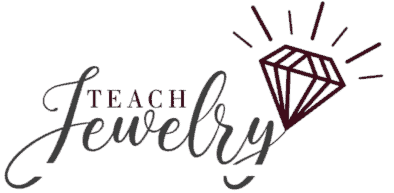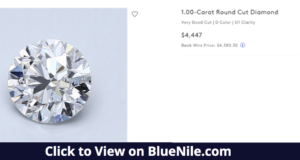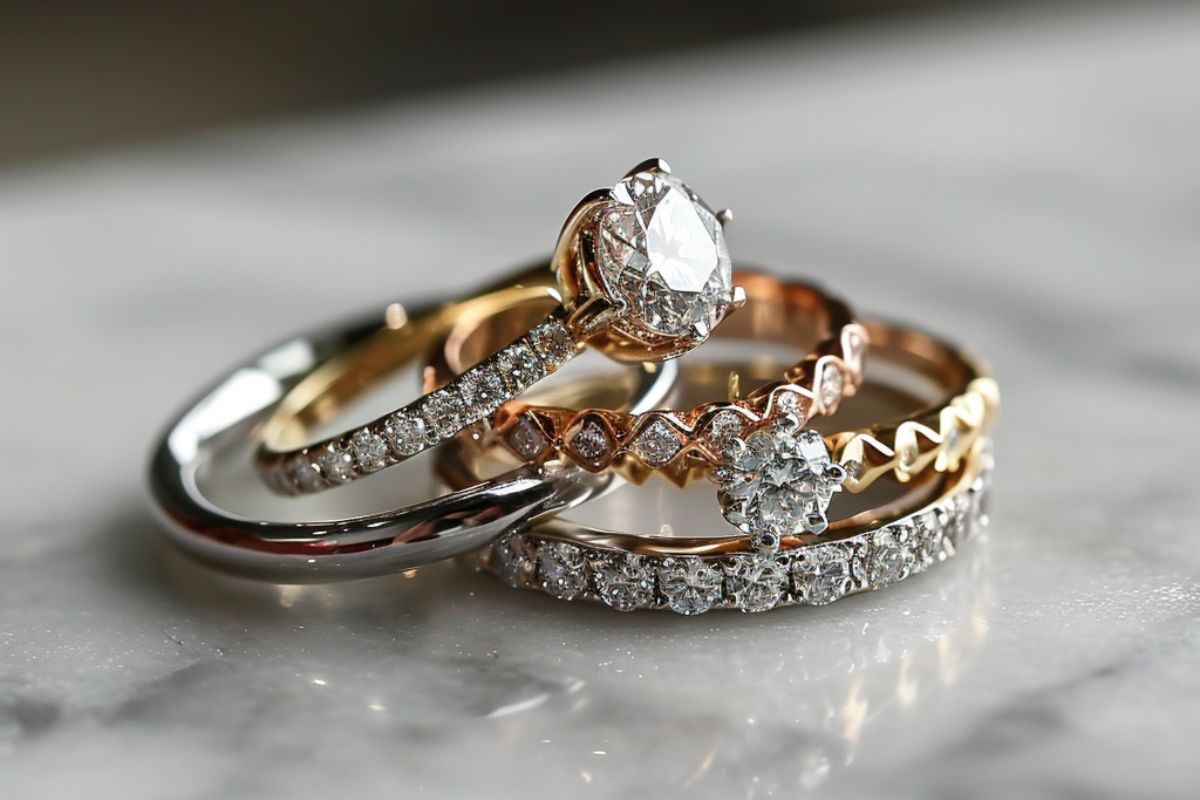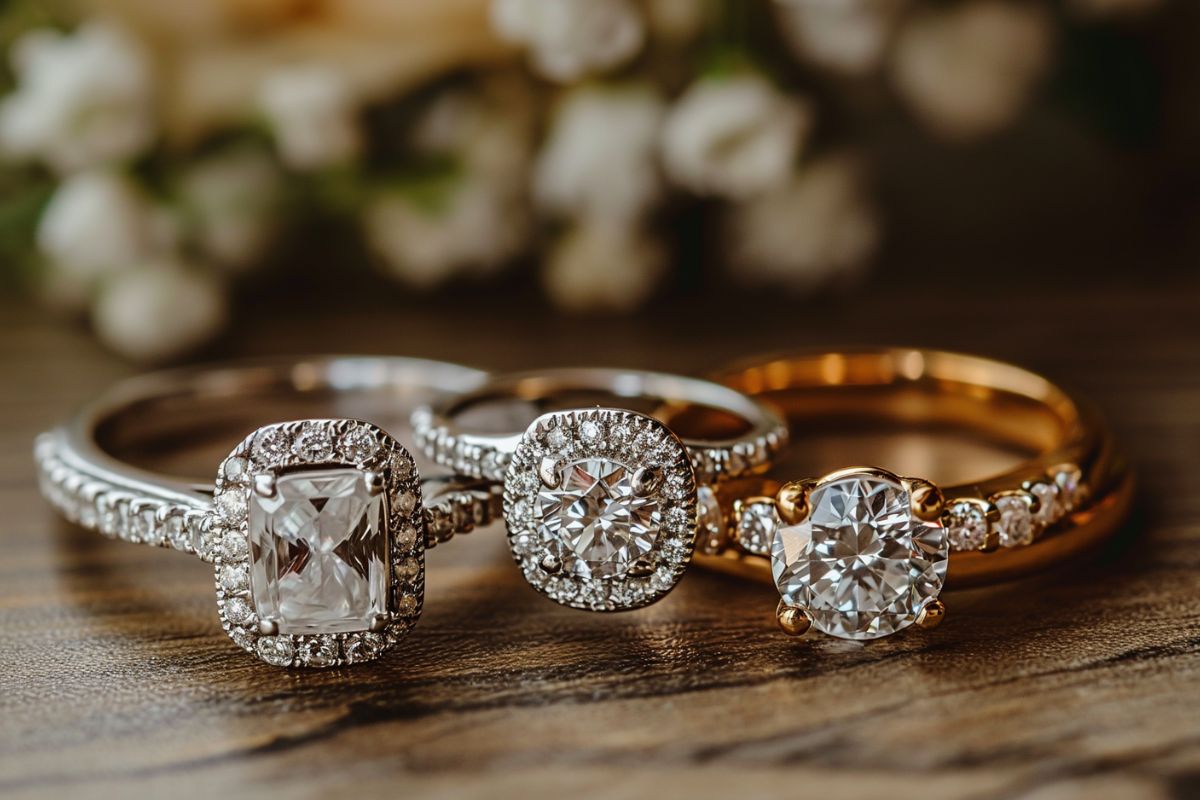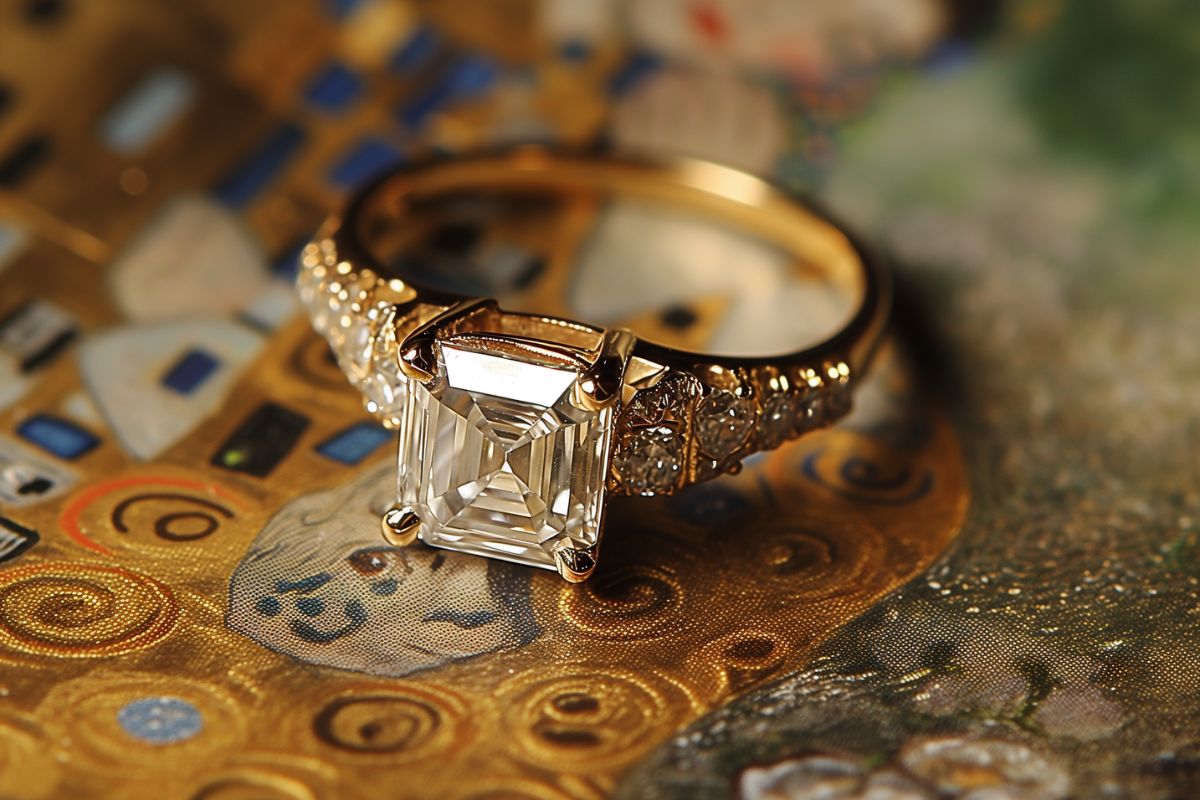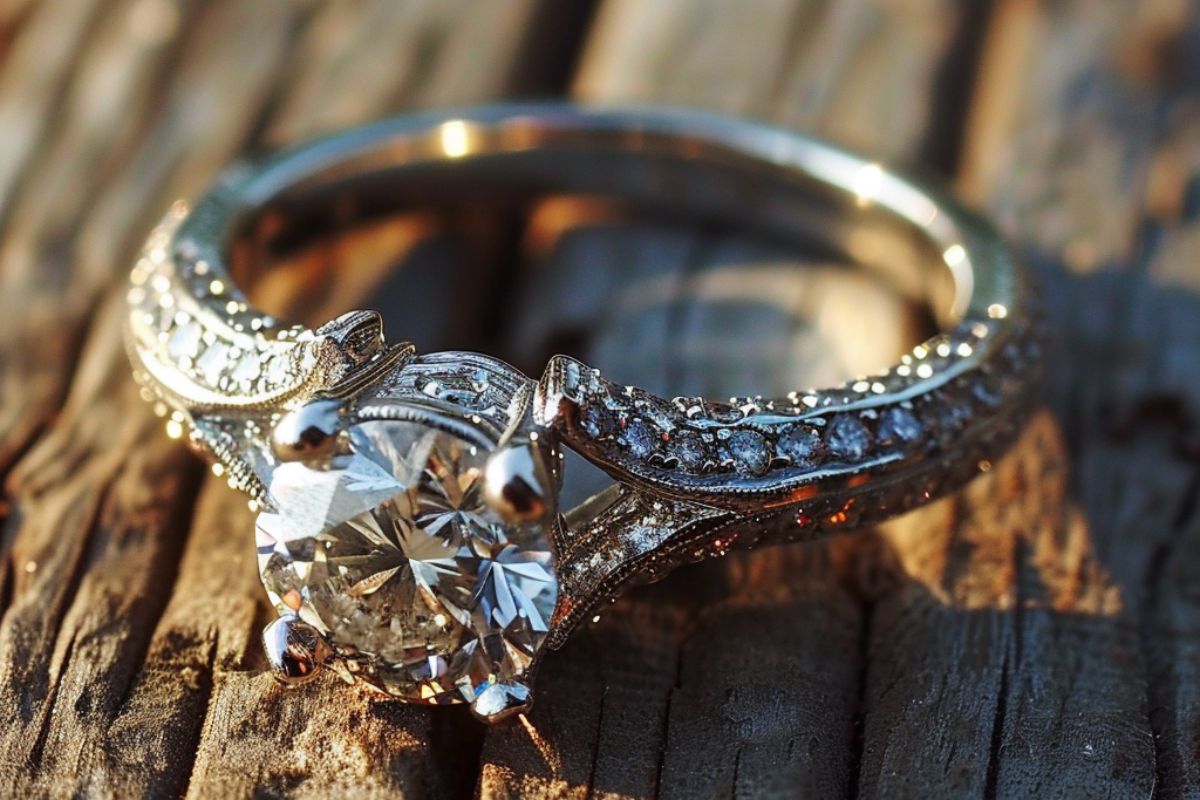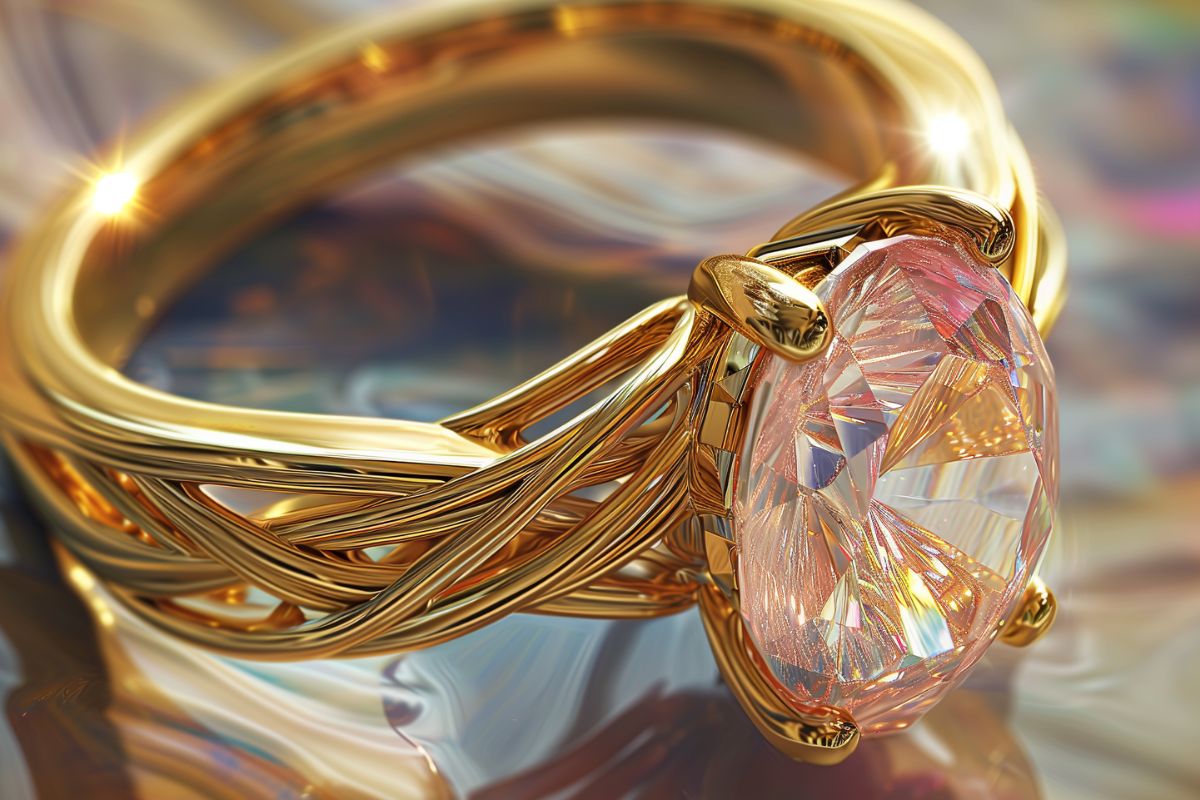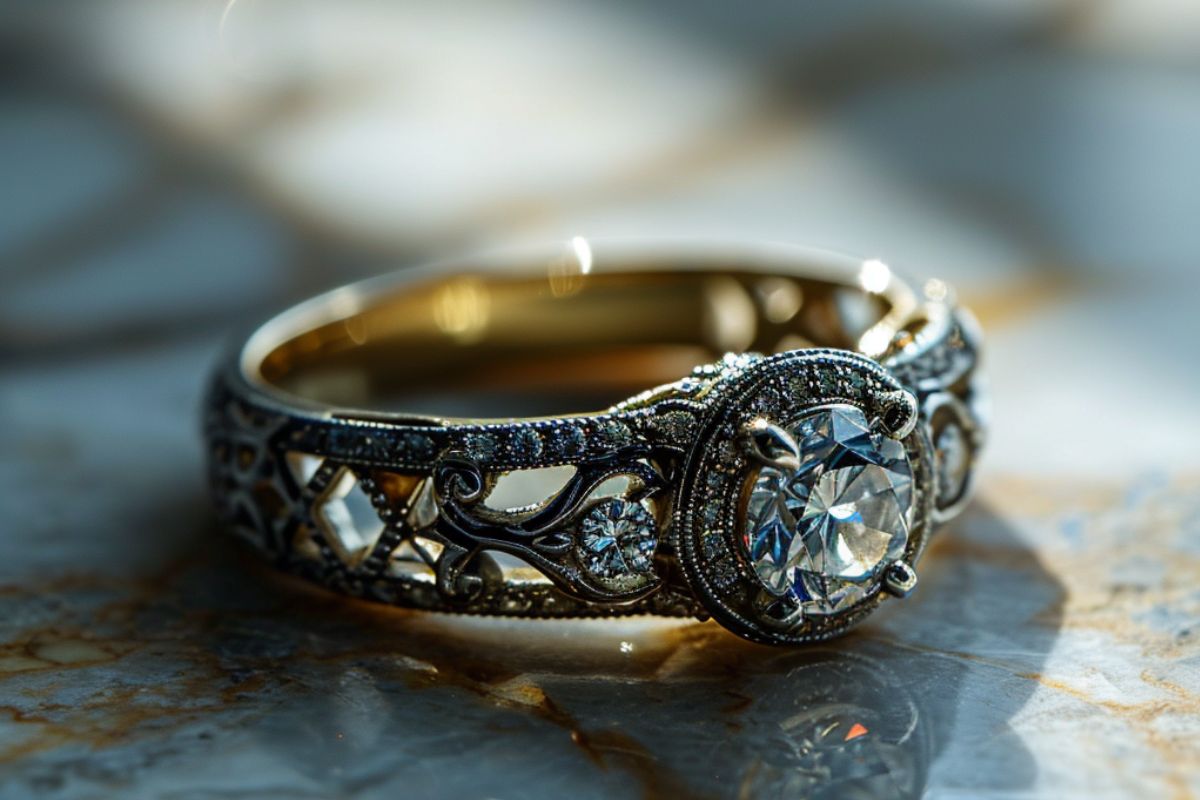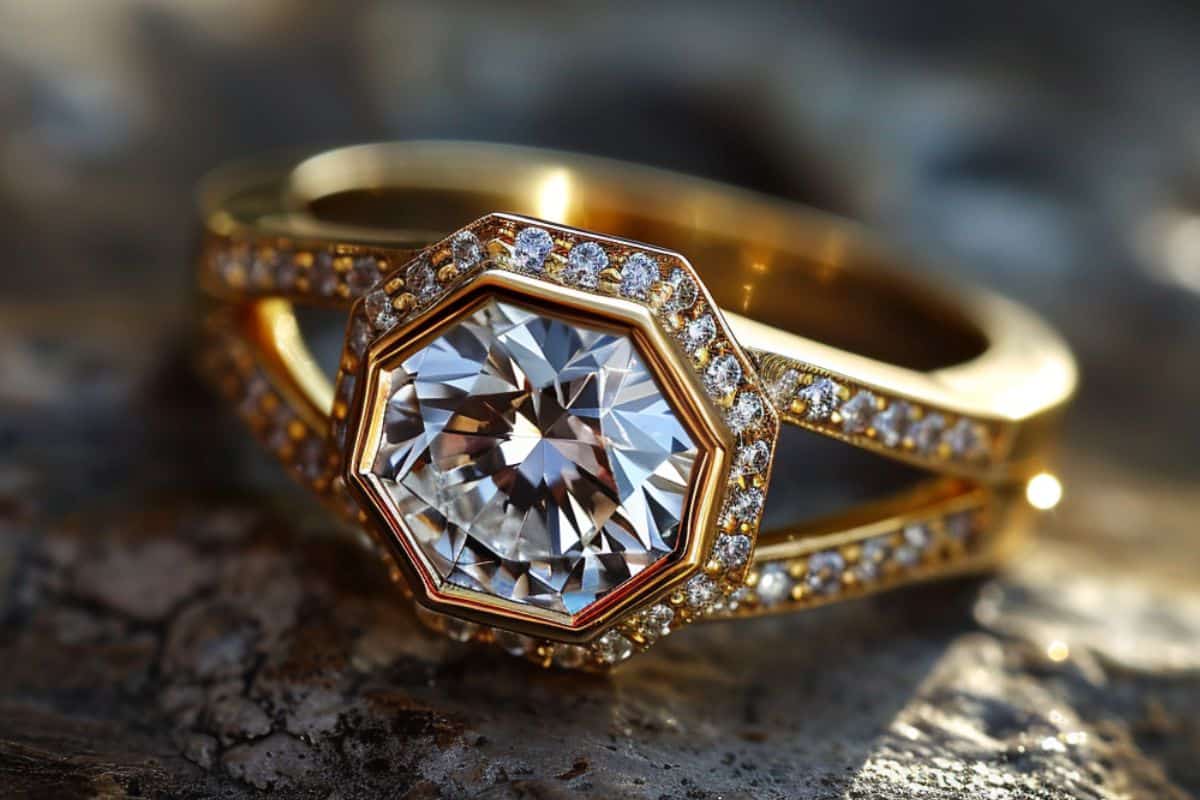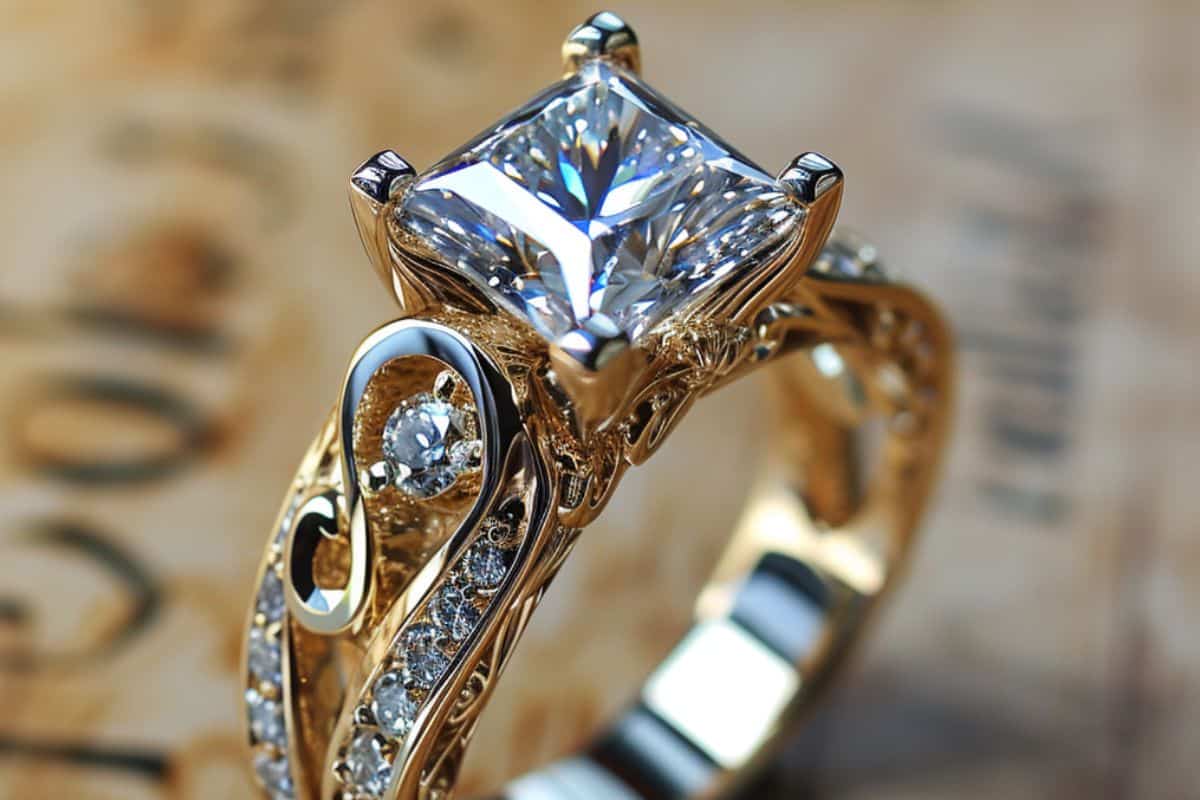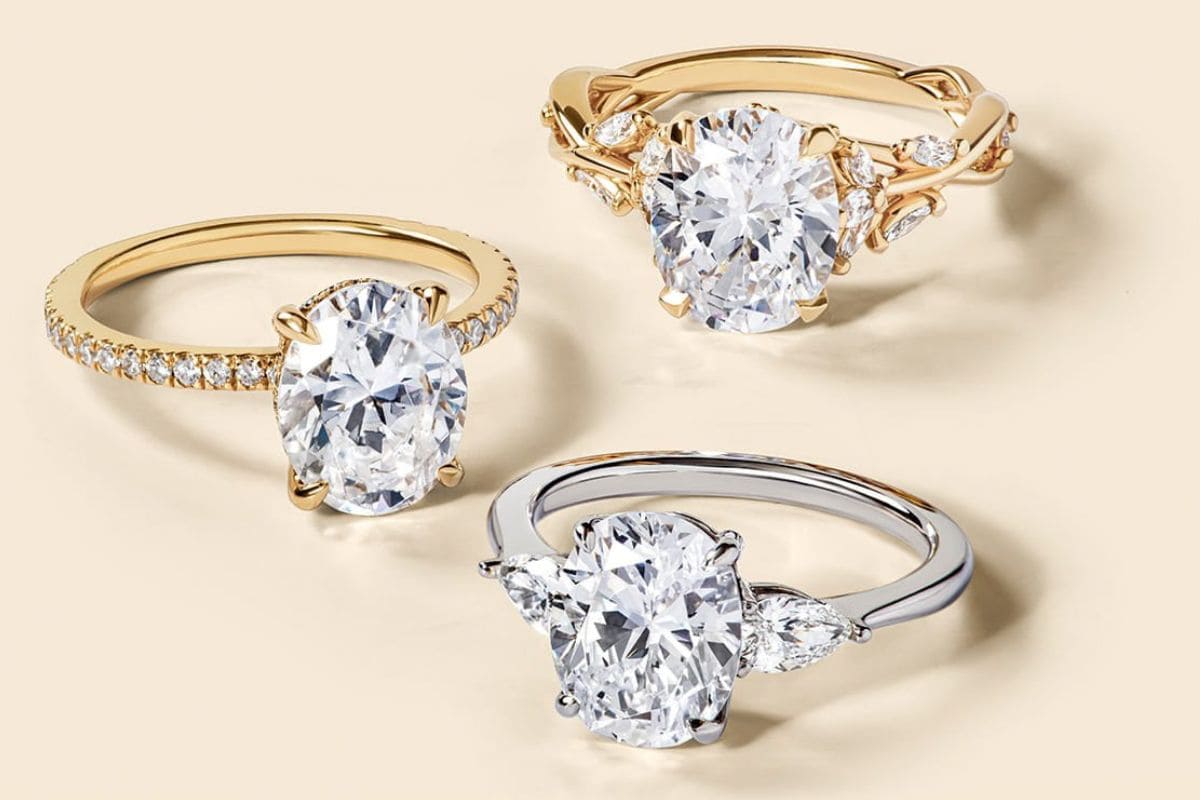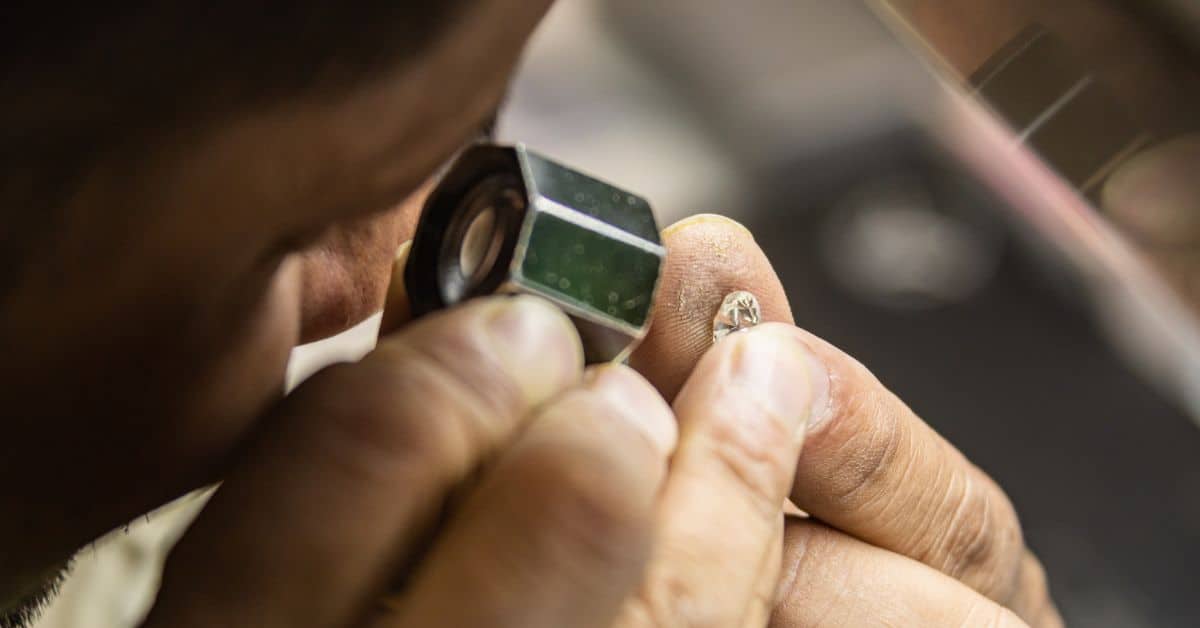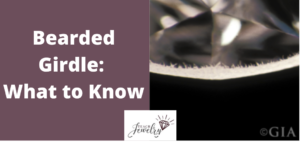
Bearded girdles on diamonds are hair-like, fuzzy white lines that begin on the surface and penetrate into the diamond.
These feathers extend from the girdle around the stone. It’s most often caused during the polishing and cutting process, where too much pressure is applied on the diamond.
There are fewer bearded diamonds on the market today because cutting technology has improved. It relies less on manual operation of the cutting machine and more on automated processes, so mistakes that result in bearding happen less often.
In rare cases, they can appear after years of wear and tear, but the majority of bearded girdles, also called girdle fringes, are formed when the cutting goes awry.
How Do Bearded Girdles Affect a Diamond?
In some cases, bearded girdles can be seen without magnification, meaning it won’t be considered eye-clean.
If a diamond has a very thick or extremely thick girdle, the bearding may be more noticeable. This is a dealbreaker for many buyers who are only accepting of inclusions that require magnification to be seen.
Additionally, any inclusion that leaves the diamond susceptible to further damage is problematic. If the bearded girdle results in large feathers extending into the stone, it can hurt the overall structure. Were hit to be hit against a hard surface or dropped, it’s vulnerable to chipping.
This is especially true if the diamond has an extremely thin or very thin girdle.
Brilliance is less of an issue with bearded girdles. Although all inclusions can limit the light performance of a diamond, bearded girdles won’t diminish brilliance in the same way as other inclusions or a poor cut.
Bearded Girdles on Grading Reports
Grading reports evaluate the diamond on a number of characteristics, including its fluorescence, color, carat weight, and more. You can often learn whether a diamond has a bearded girdle in the comments of the “Additional Grading Information” section on a report from the Gemological Institute of America (GAI).
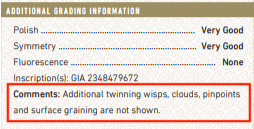
If the diamond has a bearded girdle, the phrase “bearding” will likely appear in this section.
Most other types of inclusions are plotted on the clarity characteristics plot of a grading report, but bearded girdles aren’t an inclusion in this traditional sense. It’s often considered an aspect of the diamond’s polishing, so it’s noted elsewhere on the report, apart from other inclusions.
Can They be Removed?
The decision about removing bearding from a diamond balances concerns related to clarity and carat weight. Diamonds with more carat weight sell for a higher price, so manufacturers are hesitant to remove part of the diamond, even if it’s to remove inclusions.
In the case of bearded girdles, they can be removed, but it requires recutting the diamond.
Heavier amounts of bearding that can be seen with the naked eye are often removed by additional polishing or re-cutting the diamond. This lowers the final selling price of the diamond because of the lower carat weight.
Does a Bearded Girdle Impact Price?
Any time an inclusion is present in a diamond, it lowers its price, and this is true of bearded girdles.
There isn’t an exact amount the price of a diamond drops because of a bearded girdle.
Instead, the seller takes into account how much it impacts the appearance, durability, and brilliance.
For example, a flawless one-carat diamond, with no inclusions or bearding, can sell from $10,000-$20,000, depending on its exact color and cut grade. The presence of even a few small inclusions, giving it a VVS1 grade, drops that range from $6,000-$10,000.
That’s a price decrease of up to 70 percent on the basis of inclusions. For diamonds with even more inclusions, graded SI1, they can sell for $4,000-$6,000.
If a diamond has bearding and no other flaws, the difference between its price and a flawless diamond would likely be closer to 10-20 percent, but this situation is unusual. A diamond with a bearded girdle likely contains other inclusions, which would further reduce the price.
Should You Buy a Bearded Diamond?
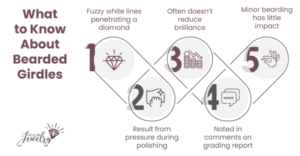
A diamond with a bearded girdle can still be the right purchase because it’s an inclusion that has minimal influence on its long-term durability, appearance, and light performance.
Examine it in-person or through high-resolution photos online to learn if it’s still eye-clean.
Take into account the diamond’s clarity and polish grade. If its polish is graded “very good” and the clarity is an SI1 or above, you shouldn’t worry about the impact of a bearded girdle.
There may be instances where it causes problems with girdles at each end of the thickness spectrum, but by purchasing a diamond from a trusted retailer that includes a graded report, you can be confident in its quality.

Jacob Clarke
Jacob Clarke is the founder of TeachJewelry.com.
He earned an Applied Jewelry Professional Diploma from the Gemological Institute of America (GIA) and now brings you essential information about diamonds, settings, and more.
Jacob has consulted with leading jewelry brands, and his work has been cited in Clean Origin, Diamond Nexus and industry publications.
He's also a member of the International Gem Society.
He enjoys discussing jewelry with readers, so contact him with any questions at jacob.clarke@teachjewelry.com.
